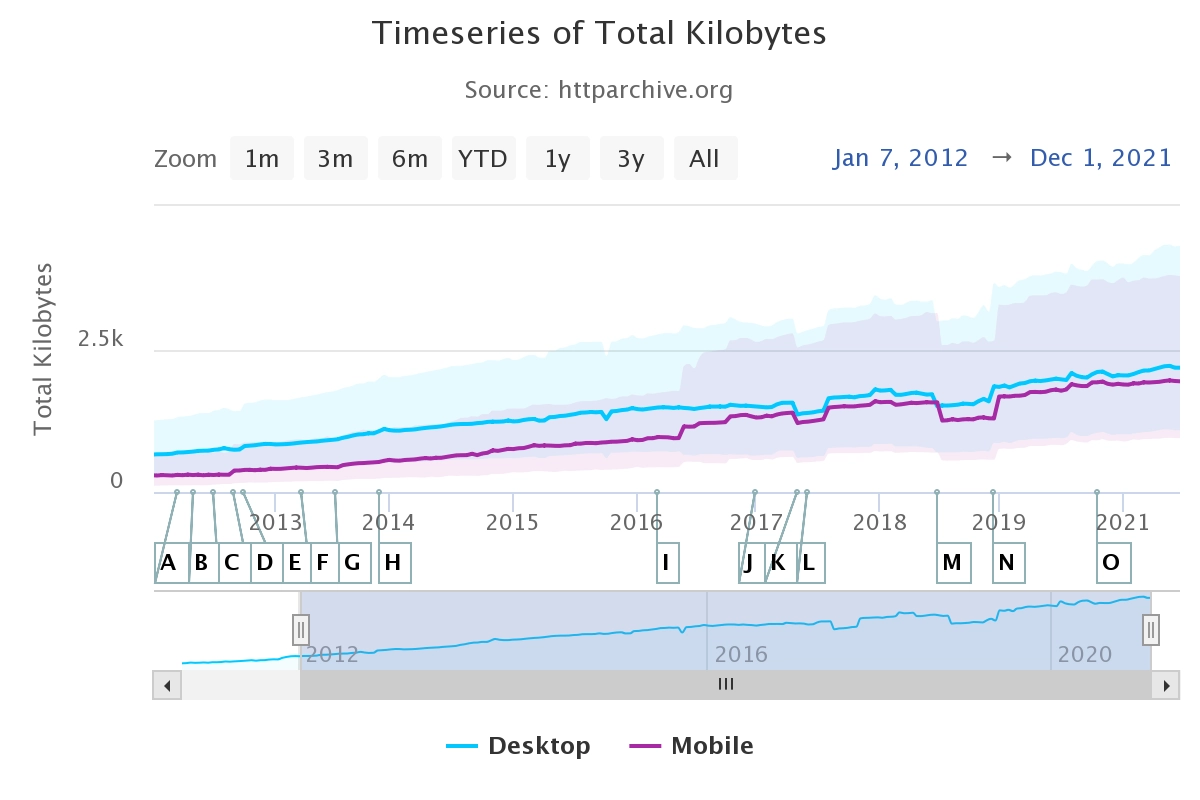eco2rd web browser extension
This is eco2rd, a browser extension that aims to help you measuring and understanding your digital browser traffic based CO₂ footprint while you are browsing the web.
Download from chrome web storeGithubWebsite emissions? Why does it matter?
While it is obvious that your machine - be it your phone, your laptop or your TV - needs electrical energy to run and display website content on its screen, other energy consumers that are linked to the same goal might be less natural to think about:
For example the energy that is needed to let your browser render the information from any website with the underlying data transfer from the hosting provider to your machine. This data transfer comes - similar to powering your machine at home - with the cost of energy from different angles: from the data center the website is hosted on, from the network over which this data is transferred and only as a last instance from your machine as the end consumer.
In the past 10 years the average website size grew more than 200%
Based on the data of http archive: state of the web, the trend in websites getting larger and larger does not seem to slow down. While in 2012 a median desktop sized web page had a size of 660 kB, todays websites come across with around 2.2 MB of data on average. (Side note: the world first websites were around 4 kB in size.)
Websites that are consumed via mobile even grew more than 500%, from around 300 kB to around 2 MB.
Coming back to our web based energy consumption: Sadly, the internet is no energy-eldorado. Every byte, every bit costs energy - and this energy comes from our states' grid systems with all their side effects and carbon emissions heating up our beloved world.

Calculating your digital footprint with eco₂rd
In order to better understand how much energy and GHGs (Greenhouse gases) are (approximately) used while using the web browser, eco2rd got developed as a currently 1-person-project.
The extension is leveraging the idea from the so-called 1byte model that was described by "The Shift Project" several years ago. The idea is simple: 1 byte transferred has an equivalent of a specific amount of energy in Watts per hour (W/h).
Based on whether you want to be more accurate in your measurement you have a few options to modify your digital footprint calculation within the extension:
kWh-modifier
The kWh-modifier lets you decide on whether you want to take narrow system boundaries or complete system boundaries into account for your calculation. This option was introduced due to the fact that estimates for internet energy consumption differ quite widely based on which parts of the total system are included in the analysis. More insights about this topic can be found in this blogpost from wholegrain digital: Why do estimates for internet energy consumption vary so drastically?
Region
Every country has its own electricty grid that consists of different portions of energy sources (also known as the power mix). This is the reason why the greenhouse gases per kWh are varying, too: While only 130 gCO₂ are emitted in Canada for generating 1 kWh, it's 449 gCO₂ in Mexico (numbers from 2018, via climate-transparency.org).
As you might notice - those differences make a quite huge deal in the actual footprint calculation. To have a more precise measurement you can select the country you are located in.
The role of data centers
Data centers play another key role in eco2rd's measurements. The extension is assuming that around 10% of calculated energy is used on data center side for providing the website data - the other 90% are used for data transmission to the user and data processing on the end user side.
Depending on whether the website you are requesting is listed as a green energy center or not, this will have an influence on the calculation of your digital footprint, too. eco2rd is using the official database of TheGreenWebFoundation to evaluate whether the data center that is hosting the website you are visiting is certified as a green one. (This check is done on the first visit of every website. Re-evaluations are happening in intervals of 7 days after the previous check.)
If you pin eco2rd to show up next to your address field in your browser, you will notice a color change of the extension icon from time to time. The icon indicates whether eco2rd is aware of the data center status. In total there are 3 different states:
 the data center is certified as green energy center by GWF
the data center is certified as green energy center by GWF the data center is not listed as green data center by GWF
the data center is not listed as green data center by GWF eco2rd does not have information about the data center yet
eco2rd does not have information about the data center yet